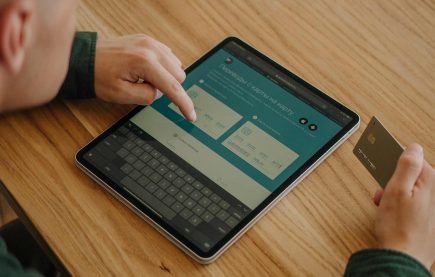A Guide to Usability for Web Design and More!
Usability is elemental. Either it is or it isn’t. Broken down into five components, usability is:
- Impression – On first being presented with the design, how quickly do users adapt to perform basic tasks?
- Ability – Once basic skills are learned, how quickly will a user become efficient?
- Comprehension – After interacting with the design and putting it down, will users retain the required skills the next time they encounter it?
- Error Rate – What kind of mistakes do users make and how easy are they to correct?
- Contentment – How satisfied are users with the design?
Give a Caveman a Potato Peeler and a Yukon Gold
First, he feels the weight of the peeler, the curvature of the metal and the sharpness of its blade. It feels right in his hand. Next comes experimentation. He strikes the blade against the potato and then stabs it. He runs the blade across its skin and finally discovers an efficient way to remove it. Success!
Our caveman spends the next five minutes learning the best way to peel the potato, starting at first with small, jerky movements. Soon, he learns that long smooth strokes will get the job done quicker. He grabs another potato and starts peeling. This one only takes him half the time. 30 minutes later he’s peeled every potato in the village, taking an average of 45 seconds per spud.
Why was he able to wield a tool that he’d never used before so easily? Because a potato peeler has a high usability level.
What did that have to do with Web design?
Whatever the tool, be it a potato peeler, a hammer, an iPhone or a website, ultimately, the only thing that matters is how well it assists you in reaching your goal. Are you looking to convert views to sales? Do you want your website to be a trusted source of information or entertainment?
Highly Usable Sites
Take a look at a few examples of sites that take usability to the next level.
The largest video sharing website on the planet, from its effortless search system to rating, sharing and embedding, YouTube has become synonymous with online video. My 70-year-old Mother in Law looks up recipes and my seven-year-old nephew searches for train videos. Neither are technologically adept, and yet, with virtually no assistance, they can access a massive archive of information from their desktops more easily than if they had gone to the library.
www.Google.com
Google is so usable that it has become a verb and was voted the most useful word of 2002 by the American Dialect Society. A model in minimalist design, its multicolor logo and instantly recognizable search bar have become the main portal through which much of the world accesses the Internet.
www.Nike.com
This well-known brand presents a consumer-centric site, geared towards making it as simple as possible for their customers to find products that specifically relate to their interests. Multiple categories allow for a very directed search. In addition, the site is responsive so it functions perfectly no matter what screen size or device you view it on.
Usability in web design is not necessarily about the most aesthetically pleasing solution; form follows function. If your site has 20 beautiful widgets but fails to provide a simple way for users to interact with it, it will likely lose viewers to a site with just one good one. Ignore usability at your own peril.


